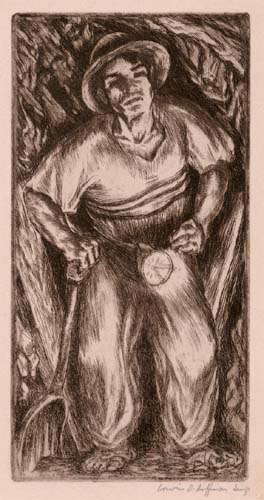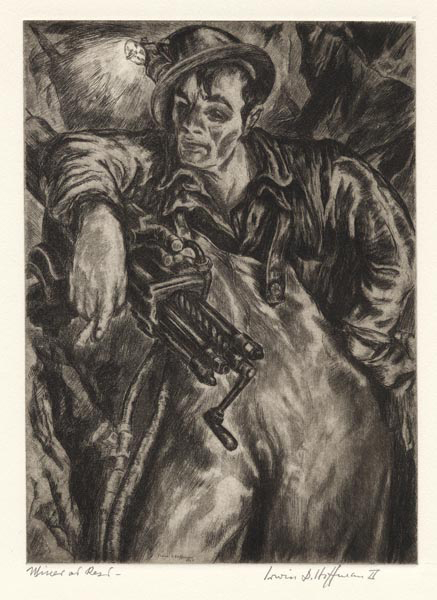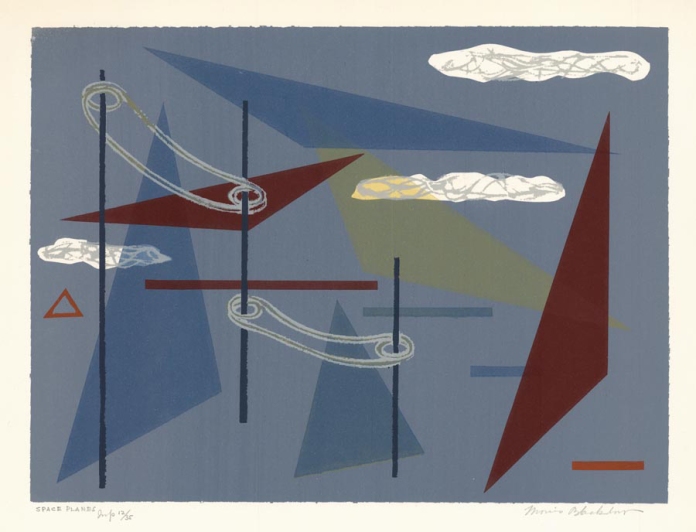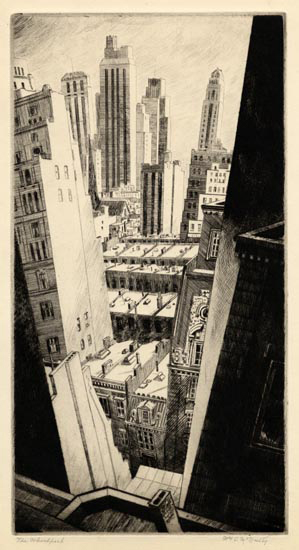
 Today we are sharing three more additions to our 20th century inventory- works by Irwin D. Hoffman, Morris A. Blackburn, and William C. McNulty. Read on below for information about the artists’ lives, travels, and studies. We also invite you to check out our yesterday’s post, a showcase of new prints by American printmakers John J.A. Murphy, Norma Bassett Hall, and Roi Partridge. Our inventory is constantly expanding and changing, especially in the field of 20th century and contemporary prints.
Today we are sharing three more additions to our 20th century inventory- works by Irwin D. Hoffman, Morris A. Blackburn, and William C. McNulty. Read on below for information about the artists’ lives, travels, and studies. We also invite you to check out our yesterday’s post, a showcase of new prints by American printmakers John J.A. Murphy, Norma Bassett Hall, and Roi Partridge. Our inventory is constantly expanding and changing, especially in the field of 20th century and contemporary prints.
Irwin D. Hoffman (1901- 1989)
Hoffman was born in East Boston, a son of Russian immigrant parents. He enrolled as a part-time student at the Boston Museum of Fine Arts at the very young age of 15, later attending the school as a full-time student on scholarship once he graduated from high school. His first solo show was at the age of 19 at Grace Horne Galleries, where he was reviewed by the press as “a prodigy in portraiture.” He was awarded the Paige Traveling Scholarship in 1924, prompting travels throughout Europe, where he studied the old masters of painting and was introduced to the new wave of European modern art. Returning from Europe, he opened a studio in New York City, a space he worked and lived in the rest of his career.
In the 1930s and 40s, Hoffman traveled extensively to the southwestern United States, Mexico, and Puerto Rico, visiting his two brothers who owned a mining company and worked as prospectors. Much of his artistic output was a result of these travels- including portraits of the miners he befriended and etchings of the small mining communities he visited.

Mexican Miner. Irwin D. Hoffman. Etching, 1933. Edition unknown. Signed in pencil. LINK.

Miner at Rest. Irwin D. Hoffman. Etching, 1937. Edition 50. Signed and titled in pencil. Second printing, c.1975. LINK.
Morris A. Blackburn (1902- 1979)
Born in Philadelphia, Blackburn studied at The Graphic Sketch Club and the Philadelphia Museum School of Industrial Art, later continuing his education at The Pennsylvania Academy of Fine Arts. Blackburn was one of the first artists to use silkscreen (serigraphs) for fine art prints in the early 1940s, a printmaking technique he learned in WWII doing war posters and camouflage.
Known for exploring traditional and new printmaking techniques, Blackburn’s early prints were compositions of flat, bright color, moving towards abstraction. In fact, Blackburn experimented with all different media, including pottery, murals, furniture construction, and painting. He also wrote extensive and highly descriptive diaries, which offer great insights into his life as an instructor at the Pennsylvania Academy of Fine Arts, new techniques he had learned, and records of his art sales and exhibitions.
Blackburn won two Cresson Traveling Scholarships and the John Simon Guggenheim Fellowship. His travels to Vienna, London, and Paris introduced him to works by artists like Egon Schiele, Gustav Klimt, Turner, and Cezanne. He also studied printmaking at Stanley Hayter’s workshops at the Print Club, and the interactions with artist there were energizing and inspiring for the innovative Blackburn.

Space Planes. Morris A. Blackburn. Serigraph, c. 1950. LINK.
William C. McNulty (1889- 1963)
Born in Utah, McNulty studied at the Art Students League from 1908- 1909. McNulty began his artistic career as a newspaper artist and editorial cartoonist, working in Nebraska, Montana, and for several years at the Seattle Star under the pen name of VON-A. Encouraged to try his hand at etching by Joseph Pennell, McNulty became a talented printmaker, using New York City as his inspiration. He was exhibiting prints by 1927 and had prints included in the first International Exhibition of Etching organized by the Art Institute of Chicago in 1932. He taught illustration and composition at the Art Student League from 1931 to 1958, and simmer art school in Rockport, Massachusetts. Described as a “romantic realist” by a 1963 New York Times article, McNulty created prints of the city’s architecture and street life, all imbued with a sense of grandeur and resplendence. His later work was an eclectic mix of prints of circus performers, NYC dock scenes, pictures of bustling street markets, and experimentations with abstract, mosaic-like assemblages of interlocking flat shapes.

The Whirlpool. By William C. McNulty. Drypoint, 1930. Edition unknown. LINK.